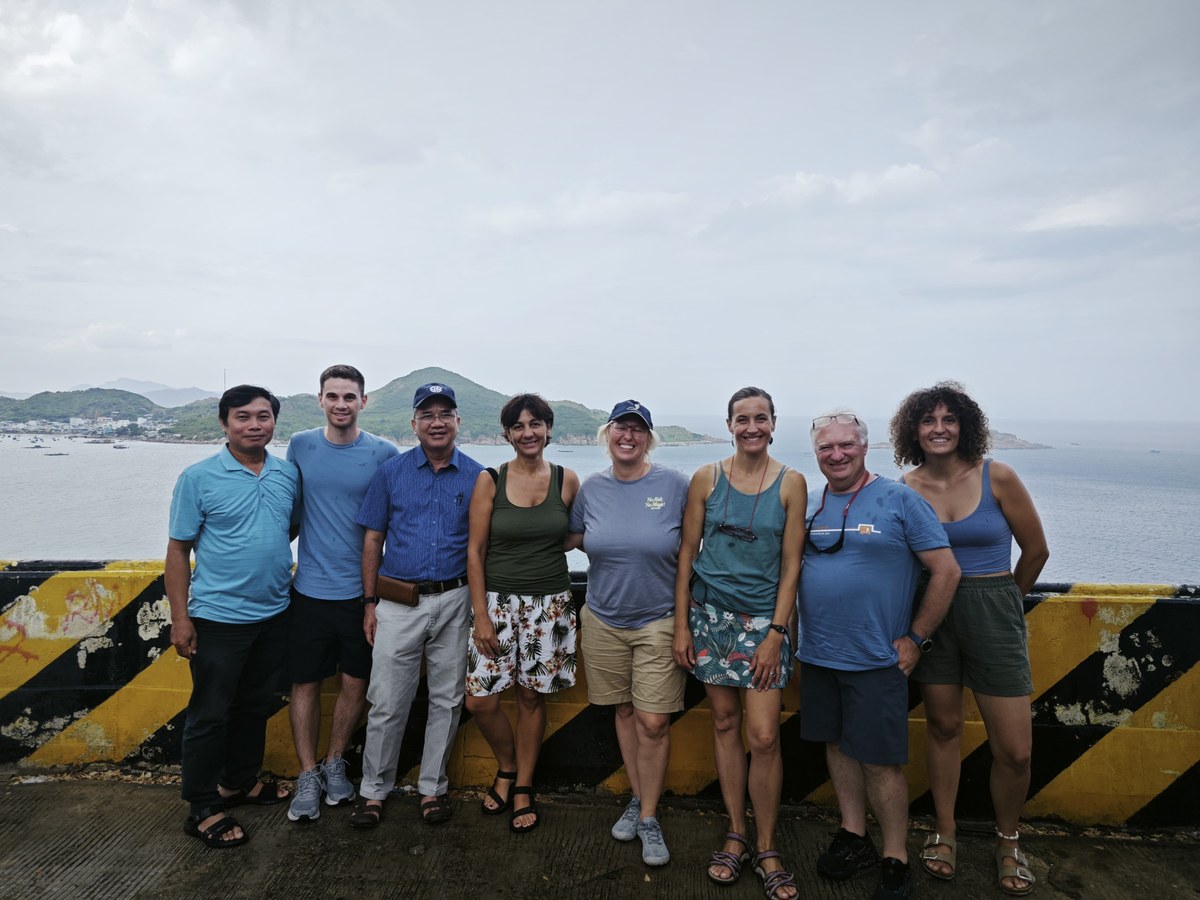28th June to 11th July 2025
The team from the University of Bologna went on a first field trip expedition to Vietnam and survey the different sites.
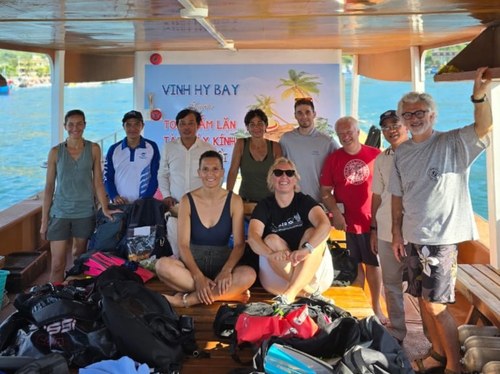
The team arrived in Nha Trang on the 28th June, ready to survey a variety of sites in two protected areas: Nha Trang Bay and Nui Chua Park. The team stayed a total of 14 days to use different techniques in order to monitor those sites. You can read more about it on the "Sites" page.
The objectives of this field trip were:
- On-site traditional and innovative ecological assessment sampling
- Meet in person our colleagues from the Institute of Oceanography of Nha Trang
- Agreement with the Nui Chua Park authority to present the project
- Workshop with several Vietnamese and foreign researchers studying coral reefs in the area
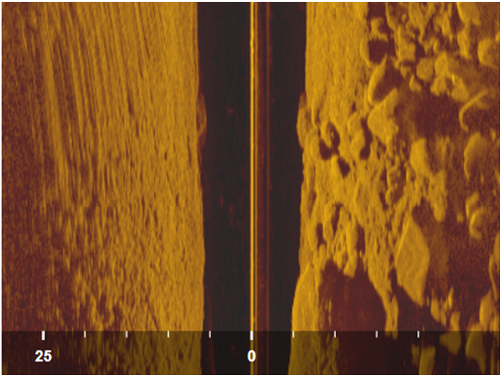
Before the dive, the study area was acoustically mapped with a side-scan sonar. The emission of fan-shaped pulses toward the seabed, at a wide-angle perpendicular to the sensor's path through the water, allows for understanding the differences in the type of material and texture of the seabed, identifying rocks/corals vs. sediments. For this purpose, a shallow-water instrument was used, allowing for exploration of a 20-40 m band on each side, with a decimetre resolution and a positioning accuracy of 2-3 m.
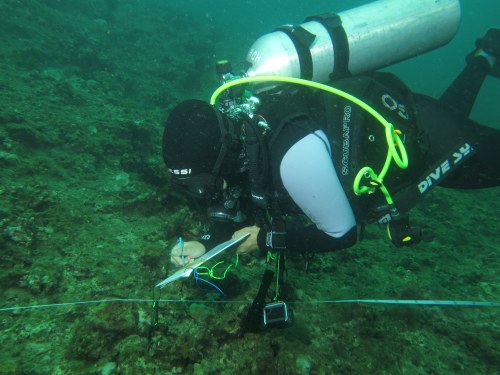
Firstly, the team used a visual census technique to collect data on the reef status using the Reef Check (RC) protocol. After setting a 100 m measuring tape, 4 replicate transects of 20 m each were sampled.
RC protocol focuses on indicator species divided into four main components: substrate type, fish abundance, invertebrate abundance, and anthropogenic impacts. RC has been applied globally and provides a valuable framework for data collection that is accessible to non-professional scientists.
This protocol is at the base of the Global Coral Reef Monitoring Network (GCRMN), an operational network of the International Coral Reef Initiative (ICRI).
You can have a look for more information on https://www.reefcheck.org/tropical-program/
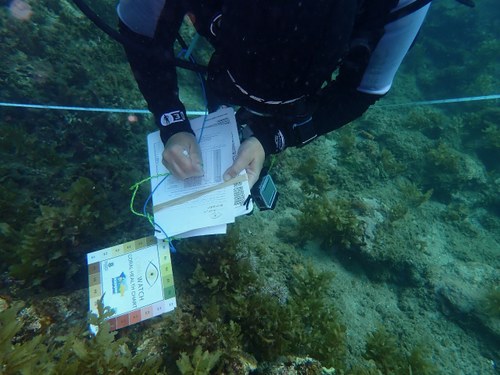
Another visual census tool that the team used is the Coral Watch method. It provides a specific measure of the ongoing coral bleaching. Using a colour chart, it is possible to quantify changes in coral colour associated with coral bleaching on the reef. Following the same transect as for Reef Check, the team had measured the colour of at least 10 corals by transect.
You can find more information on: https://coralwatch.org/
The same transects surveyed by the RC protocol were recorded by two digital video cameras, one with a close-up view looking down and the other with a panoramic view looking forward (~45° down). These videos will provide a permanent visual record of the reef and may supplement RC data.
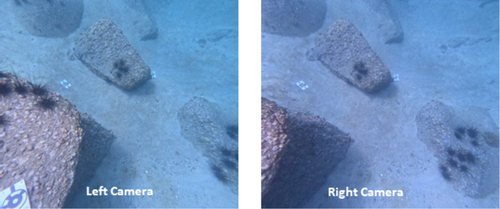
Along the first transect explored with the Reef Check protocol, the team collected the data and images necessary to reconstruct a three-dimensional digital model of the seabed and epibenthic organisms in an area of 200 m2.
This innovative technique combines stereo-images and the Structure from Motion (SfM) technique to create a digital 3D model of the area. Indeed, two side-by-side cameras (GoPro Hero 12) were fixed on an aluminium bar, and the whole area was photographed along a grid pathway. This type of picture collection is called stereo photography and produces stereoscopic images, as we have two parallel cameras pointing in the same direction.
The team will use a multitude of tools, such as measuring objects on the site, obtaining a visual map of the area, and comparing the same site over the years.
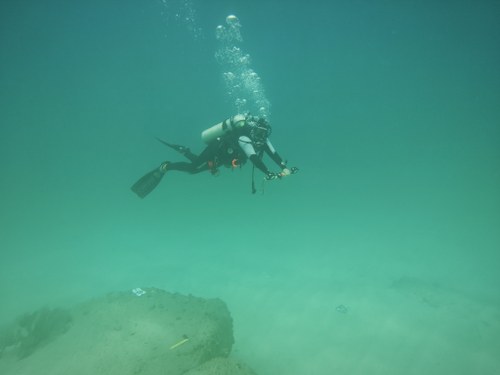
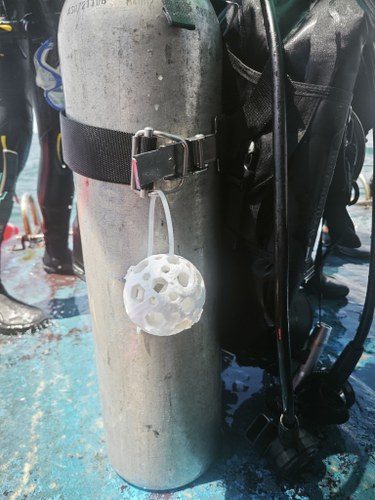
In addition to the acoustical and optimal approaches, the team has also collected samples for molecular analyses.
The team has used an innovative technique using a 3D printed Metaprobe (Maiello et al. 2022) with a cotton piece. While the divers are doing other tasks, the cotton will absorb sea water, but also the environmental DNA that is all around.
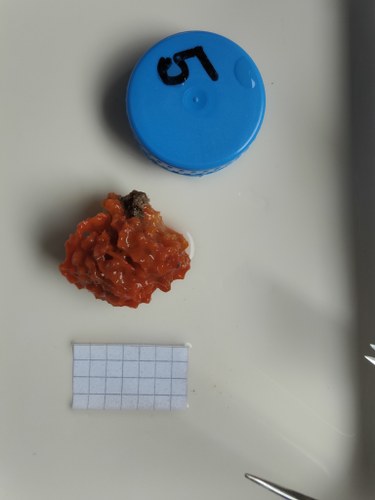
Using the same idea of cotton absorbing the eDNA, the team has been collecting pieces of sponges. Indeed, sponges are great filter feeders and can stock DNA from other organisms.
Once in the lab, this eDNA (from the sponges and from the cotton) can be amplified and sequenced to describe which species are present and in what abundance. This technique enables to see species that are not visible during the dive, such as microscopic species, cryptic species, and shy species. It is also possible to analyse the DNA from foreign species before they even settle.
By using both techniques (the Metaprobe and the sponge collection), the team obtains more data from the eDNA, and comparable results.
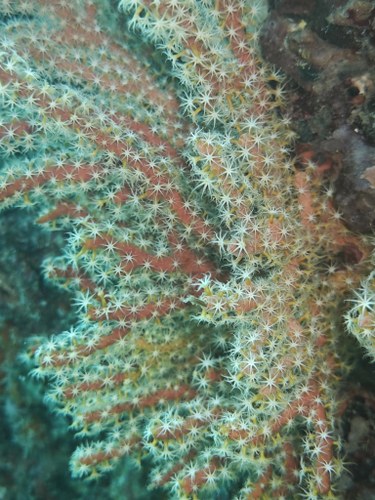
Small fragments of soft corals and gorgonians have been collected to identify them using integrative taxonomy (morphology and DNA barcoding) and to evaluate their pattern of connectivity.
Ultimately, the use of different techniques allows for a multiscale approach to site investigation, from a general overview of the acoustic map to the millimetre-level optical resolution of stereophotogrammetry, going through a population structure approach with molecular techniques.
The full team is committed to improving the application of these techniques and comparing them with traditional methods to understand their strengths and weaknesses and the potential for integration.
